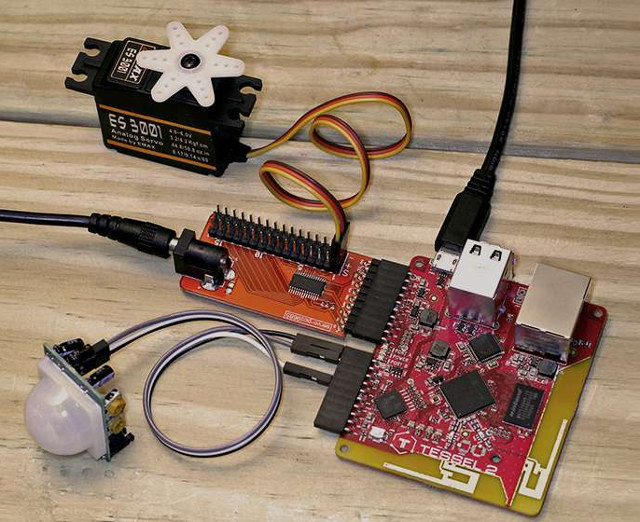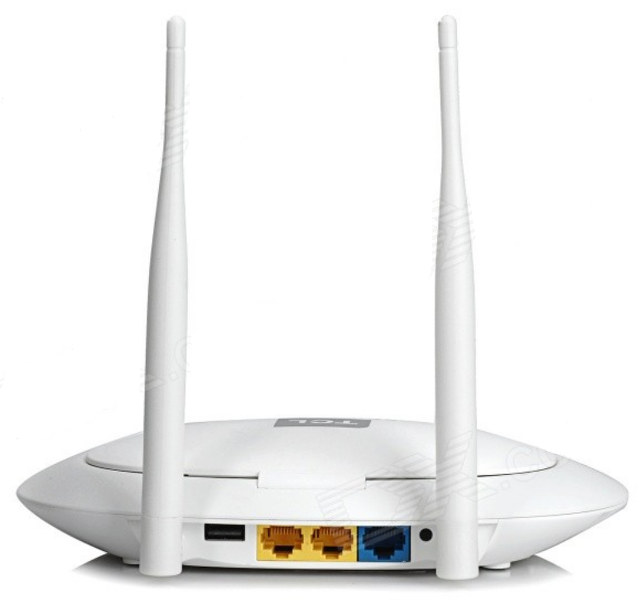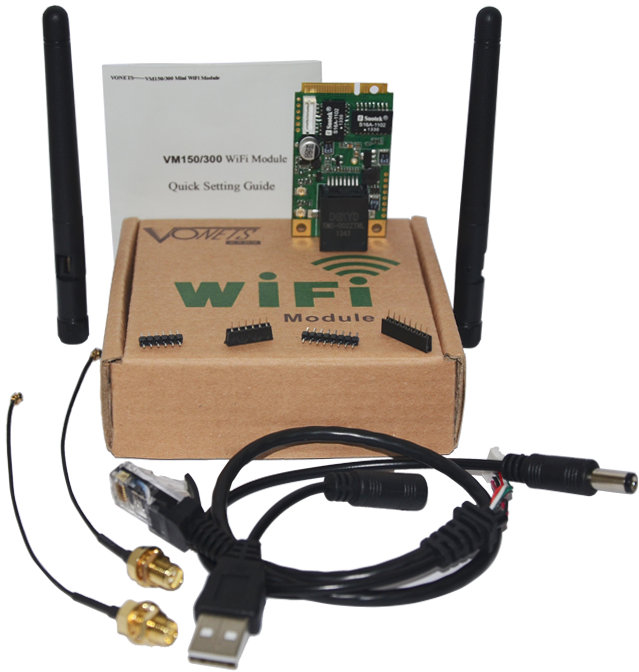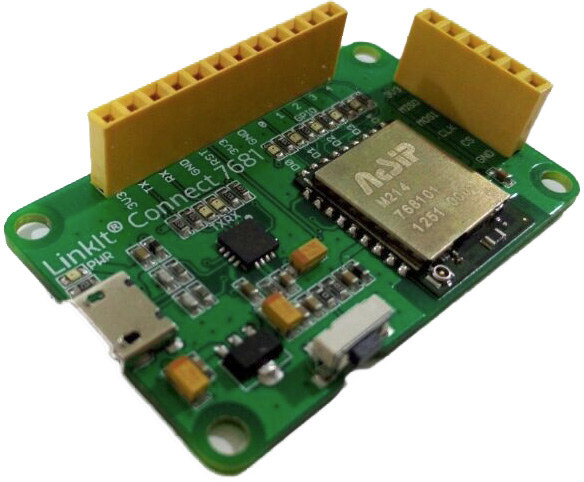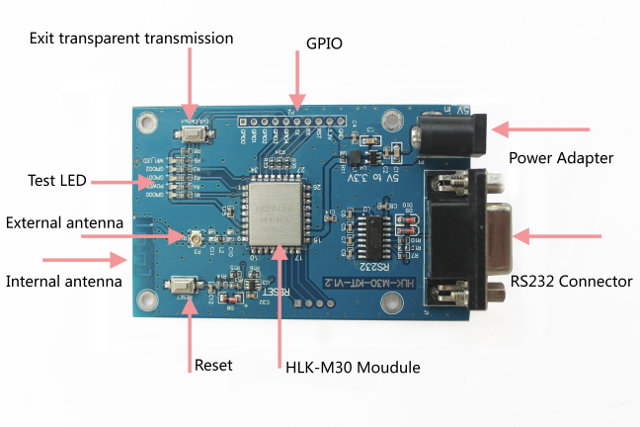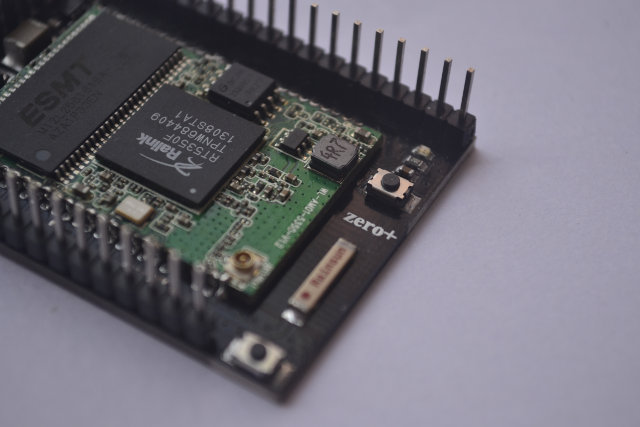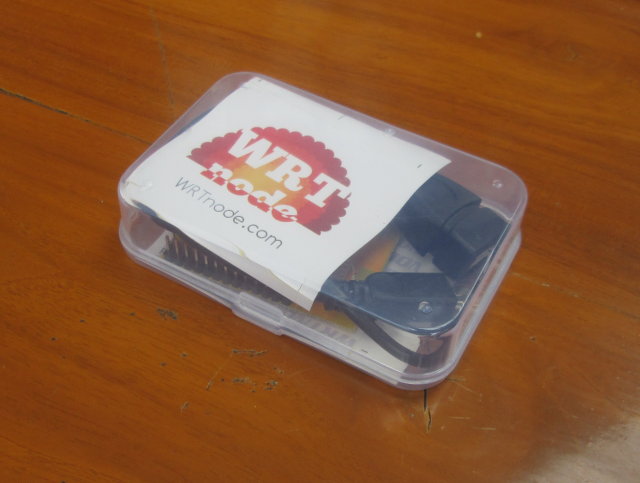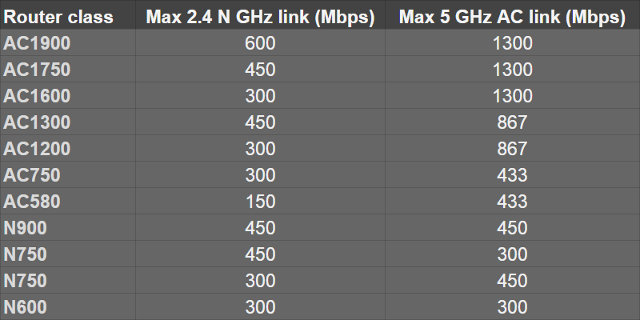Tessel is a Wi-Fi IoT board based on NXP LPC1830 Cortex M3 MCU and Texas Instruments CC3000 modules, that’s designed to bring embedded development to web programmers with a system that can be programmed with JavaScript and Node.js. At the time of the crowdfunding campaign in 2013, the board was available with external modules (Relays, sensors, Bluetooth LE…) for $100 and up, but now Technical Machine, the company behind the project, has announced Tessel 2 combining Atmel SAMD21 Cortex M0+ to control I/O and Mediatek MT7260n for Wi-Fi connectivity, still programmable with JavaScript ot Node.js. Tessel 2 specifications: MCU – Atmel SAMD21G14A-MU Cortex M0+ MCU @ 48MHz with 16KB SRAM and 2KB Flash SoC – Mediatek MT7260n MIPS24KEc Wi-Fi SoC @ 580 MHz System Memory – 64MB DDR2 Storage – 32MB flash for firmware (OpenWRT) Connectivity – 10/100M Ethernet, and Wi-Fi 802.11 b/g/n with dual PCB antennas USB – 2x […]
TCL T1 (SL-WR5028J) is a $46 Wi-Fi Router with a 2.5″ SATA Bay
Many routers now come with one or more USB ports to let you connect 3G dongles or/and storage device(s) to share the data on your local network. If you want to go with a fully integrated solution, and obvious solution is to go with a NAS, but these usually cost a bit more, so instead TCL SL-WR5028J (aka TCl T1) router could make a low cost (and low performance) NAS alternative thanks to its internal 2.5″ SATA bay, and it can be had for just $45.99 on DealExtreme. [Update: GearBest sells it for $35.98 with coupon TCLT1] TCL T1 specifications: SoC – Mediatek MT7260 MIPS WiSoC @ 580MHz System Memory – 64MB DDR2 Storage – 8MB Flash for firmware + SATA bay for 2.5″ HDD (5, 7.5 or 9mm thick hard drives are supported). Max capacity: unlimited… 🙂 Connectivity 802.11 b/g/n Wi-Fi up to 300 Mbps with two external antennas […]
Vonets VM300 Wi-Fi & Ethernet IoT Board with Mediatek MT7620 Runs OpenWRT
Mediatek MT760 is a recent Wi-Fi SoC found in some Nexx WT3020 routers, and WRTnode development board. Both run OpenWRT and costs $17 to $30 depending on the amount of flash, and ports with the former featuring two Ethernet ports, and the latter access to GPIOs. You could probably open the case of the Nexx routers and solder some wires to get access to GPIO, and you can hack an Ethernet cable for WRTnode, but another options could be Vonets WM300 kit that includes a board with Wi-Fi and Ethernet, a cable for USB / Ethernet connection, headers for GPIOs, and two external antennas for less than $30. An OpenWRT SDK is also provided for the kit. Specifications listed for VM300 board: Processor – Mediatek MT7260N MIPS processor @ 580MHz Storage – 4MB SPI Flash (option: 8MB/16MB) for firmware System Memory – 32MB or 64MB SDRAM Connectivity Wi-Fi Single band […]
LinkIt Connect 7681 is a Wi-Fi IoT Board Powered by Mediatek MT7681
So it looks like Mediatek has decided to carry on with its Mediatek Labs endeavours, as after launching LinkIt ONE last year, they’re about to introduce LinkIT Connect 7681, a development board with a Mediatek MT7681 based Wi-Fi module, and access to various GPIOs. LinkIt Connect 7681 HDK (Hardware Development Kit) specifications: SoC – Mediatek MT7681 Andes N9 processor @ 80 MHz with 64KB RAM, Storage – 1MB SPI Flash for firmware Connectivity – Wi-Fi: 802.11 b/g/n for Station mode; 802.11 b/g for AP mode via a MT7681 module by AcSIP Headers – 12-pin header for UART, 5 GPIOs (also usable as software PWM), RESET, and 3.3V/5V/GND; 6-pin header for SPI, 3.3V and GND. USB – 1x micro USB for power and programming/debugging Misc – Reset push-button, 2x UART LEDs Power Supply – On-board 1A 3.3V voltage regulator (can be powered from USB connector) I/O Voltage – 3.3V for GPIO […]
Hi-Link HLK-M30 StartKit Based on Mediatek MT7681 WiSoC Sells for $10
Here’s yet again another low cost Wi-Fi board for the internet of things with Hi-Link HLK-M30 StartKit featuring an HLK-M30 Wi-Fi module powered by Mediatek MT7681 SoC, exposing 5 GPIOs, and a serial RS-232 DB9 interface. AFAICR, it’s the second MT7681 board featured on CNX Software after xWiFi. Key feature of HLK-M30 Wi-Fi module and Starter Kit: SoC – Mediatek MT7681 WiSoC Wi-Fi Standards – 802.11b/g/n Wi-Fi encryption: WEP/WPA-TKIP/WPA-AES/WPA2-TKIP/WPA2-AES STA/AP mode Protocols supported by MT7681 – TCP Server/Client, UDP Server/Client, DHCP, DNS, HTTP Internal and external antennas Serial – DB9 connector for RS-232 Expansions 2.54mm through holes for 3.3V/GND, Tx/Rx, and GPIO 1 0 to 4. 4-pin SPI interface to flash firmware to IC (not usable by end users) Misc – Test LEDs Power – 5V power barrel Dimensions – 14.1 x 16.5 x 2.25 mm (Module size). PCB size: Unknown. Documentation including User’s manual and AT command sets, windows […]
Zero+ IoT Wi-Fi Board is Programmable with Lisp (Crowdfunding)
There have been so many low cost Wi-Fi modules and boards with GPIO headers announced this year, especially on crowdfunding sites, and from the hardware point of view, Zero+ (Zero Plus) board looks very much like many other Ralink RT5350 boards such as Vocore or AsiaRF AWM002, but what makes it different is that it can be programmed with Lisp from a web-based IDE. But let’s go through Zero+ board specifications first: SoC – Ralink/Mediatek RT5350 MIPS processor @ 360MHz with dual band 802.11n Wi-Fi with data Rate up to 150Mbps System Memory – 32 MB RAM Storage – 8MB to 16 MB SPI Flash (for firmware) Expansions Headers – 2x headers with access to I2C, SPI, USB, 2x UART, JTAG, and 14x GPIOs USB – 1x USB host port, 1x micro USB for power Misc – 2x buttons Dimensions – 36 x 25mm (possibly module dimensions only, not full board). I’m […]
Getting Started with WRTnode OpenWRT Development Board
Seeed Studio sent me two nice little boards that can be used for IoT development: WRTNode and LinkIt ONE. Today, I’ll show pictures of WRTNode and accessories, and go through the “starting guide“, and will test LinkIt ONE board a few days later. WRTnode Unboxing I’ve received WRTnode by Fedex, and the board is stored in a plastic box. Inside the box, you’ll find the board, a “special” USB used to power the board and as an OTG adapter, a piece of paper with useful links (Wiki), and some WRTnode stickers. Any micro USB to USB cable can be used to power the board, but this cable is useless to connect USB devices such as flash drives, webcams (OpenCV is supported), Bluetooth dongles, and so on. You could even connect a USB hub to connect multiple USB devices as shown below. I’ve also taken a picture of both sides of […]
Xiaomi Mi Wi-Fi Mini 802.11ac Router Can Now Be Purchased for $45
Ever since TV boxes with 802.11ac capabilities have been listed, I’ve been looking at purchasing a router with the latest Wi-Fi standard since I would then be able to test 802.11n at 2.4 and 5 GHz, as well as 802.11ac. The vast range of prices got me confused at first, but an article on Connectedly helped me clear things out. One of the most important factor is the different classes of Wi-Fi routers as shown in the table below. The class nomeclature is based on the Wi-Fi standard (AC or N) with a number corresponding to the rounded sum of the maximum throughput at 2.4GHz and 5GHz. Based on this table, and my limited budget ($100), I decided to look for AC1200 or greater routers, and I found one for TP-LINK Archer C7 AC1750 router selling for $100 on Amazon. Awesome! So I went to look on local websites only […]


